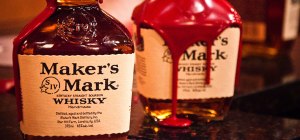I know absolutely nothing about bourbon, but even I have to comment on what appears to be a classic case of unintended mixed messaging (and perhaps short-sighted judgment), that may likely have a huge negative impact on a classic brand.
Maker’s Mark is a venerable premium bourbon whisky, taking 6-8 years to make. It even has an Ambassador’s program of people who enthusiastically and voluntarily evangelize the brand. It is a unit of Beam.
 Recently Maker’s Mark, in dealing with a ‘bourbon shortage’, announced that it would permanently reduce from 45% ABV (alcohol by volume) to 42% ABV, in order to be able to fulfill growing demand. There is no change in price. USA Today has a good commentary – you can find it here.
Recently Maker’s Mark, in dealing with a ‘bourbon shortage’, announced that it would permanently reduce from 45% ABV (alcohol by volume) to 42% ABV, in order to be able to fulfill growing demand. There is no change in price. USA Today has a good commentary – you can find it here.
Maker’s Mark management explains this formulation change in the language of alcohol reduction, in order to ‘extend supplies’. But it didn’t take long for the public (and press) to explain the change as dilution, and the motivation reinterpreted as being profit-driven (as opposed to consumer-driven). Additionally, MM management stated that the new formulation was tested with MM users who ‘couldn’t tell the difference’. (apparently this taste panel was MM employees).
We live in an increasingly transparent world – why would this explanation create issues? Well, several reasons, dealing with both the communication as well as the decision itself.
1) Don’t mess with my product. Consumers are extremely sensitive to, and skeptical of, any sort of formulation change. Loyal users, remember, are loyal because they’re happy with the product as is. Any stated change, even a purported ‘improvement’, is almost by definition a change for the worse. New Coke was over 25 years ago but the lesson holds now more than ever. In addition, by clearly stating there will be a reduction in alcohol content, MM is in effect saying we’re compromising one of the core elements of the product. In this case, not only different, but clearly worse. This fundamentally hurts this premium brand’s value.
2) Perception is reality – – even if there is no noticeable change (and that’s a little doubtful), the fact that consumers know they’re drinking a diluted product will give them the perception that it’s not the same.
3) Don’t violate my trust. This is even more pronounced in a luxury category like whisky, which is extremely personal, one’s choice is both a badge and source of pride, and where there is a greater than average emotional connection between user and brand. Any attempts to disguise or cleverly position product changes will be seen as a betrayal and will undermine loyalty in a hurry. Again, the brand will suffer.
4) Beware ‘small unnoticeable changes’. I once heard incremental product changes explained this way: You can start with a Snickers bar and remove a peanut every year; not noticeable but one day you’ll wake up with a Three Musketeers. The fact that Maker’s Mark used an internal panel fails in two ways: a) this is no substitute for actual quantitative testing with consumers and b) it smacks of breathing one’s own exhaust — I can just imagine the action standards that were set.
5) Don’t ignore the power of social media. Reaction, judged by comments on Maker’s Mark FB page, is decidedly negative, most in the ‘betrayed’ or ‘I’ll never use this brand again’ category. The Chairman’s response/comment, which was tweeted recently, can be found here. But to the extent that this defends their position rather than acknowledging negative consumer responses, sounds a bit like the Applebee’s fiasco.
In the end, the market will be the ultimate judge. But in a) diluting a premium product in the first place and b) being aggressively transparent with a negative message, Maker’s Mark may have unwittingly lost in the long run.
Faced with a shortage (of bourbon or profits), Maker’s Mark may have been better off with a modest price increase (not optimal but would reinforce the premium image), and then taking the opportunity to promote its shorter-lead-time new products (Maker’s 46 and Maker’s Mark White) while core MM capacity is built. In any case, perhaps in this case it would have been better to soft-pedal a quality change in the core product.
I agree with your last statement, that MM would have been better off increasing the price than diluting the product.
I am intrigued that they openly stated they would be reducing the alcohol content however. Did they need to disclose this or could they have quietly just changed their labels and hoped no one noticed. Were they concerned about the social media/ambassador backlash of not being upfront and transparent if they went that route?
Brands are all still experimenting with this new world they have found themselves in. I try not to be too critical of decisions that are made. But I often like to point out that the result always starts with the business decision that was made, not the social media decision.
LikeLike
Thanks for the comment. As you mention, much easier standing on the sidelines offering criticism than being in the middle of it. Having said that, I can’t think of any situation where proactively volunteering that you’re reducing product quality is a good thing. 2 options: don’t do it in the first place, or find some other way to communicate (bundle with other announcements, whatever). IMHO there is a limit to the philosophy of total transparency, if it results in a huge self-inflicted wound that arguably just made things worse…
LikeLike